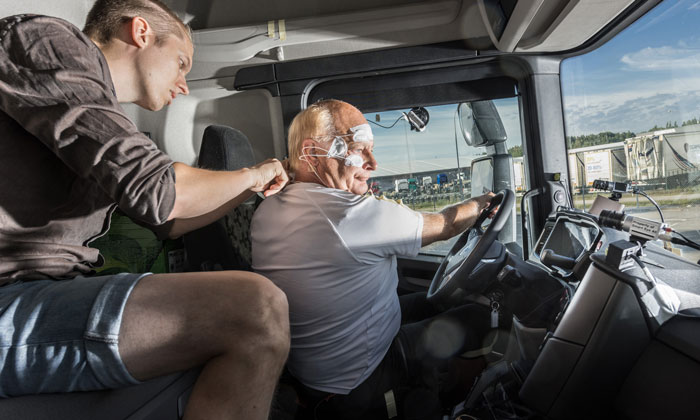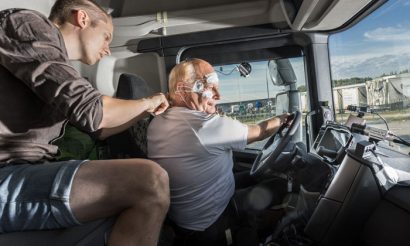Researching rest for driver safety
- Like
- Digg
- Del
- Tumblr
- VKontakte
- Buffer
- Love This
- Odnoklassniki
- Meneame
- Blogger
- Amazon
- Yahoo Mail
- Gmail
- AOL
- Newsvine
- HackerNews
- Evernote
- MySpace
- Mail.ru
- Viadeo
- Line
- Comments
- Yummly
- SMS
- Viber
- Telegram
- Subscribe
- Skype
- Facebook Messenger
- Kakao
- LiveJournal
- Yammer
- Edgar
- Fintel
- Mix
- Instapaper
- Copy Link
Posted: 22 August 2017 | Intelligent Transport | No comments yet
A ground-breaking European research project is trying to determine how drivers of autonomous trucks rest, as well detecting other emotions through the use of body sensors and camera monitoring.


A ground-breaking European research project is trying to determine how drivers of autonomous trucks rest, as well detecting other emotions through the use of body sensors and camera monitoring.


Ten drivers are taking part in the research project headed by the Swedish National Road and Transport Research Institute. A total of 13 sensors are attached to his body while an additional three cameras monitor his every facial movement behind the wheel.
In a Scania-led study, the objective is to determine how drivers of autonomous trucks might rest, as well as to identify means of measuring that rest. However, that is just one of the many aspects of this wide-ranging research project. Other aims include further enhancing emotion detection algorithms for positive, angry, scared and neutral states of mind, and using data from the project to develop existing algorithms for detecting sleepiness. A further area of study is understanding the reasons for a driver becoming distracted at the wheel, as well as using collected data to try and identify if specific road features are more likely to induce certain driver states.
Driving and resting
Over an intense 24-day test period, 10 drivers have taken turns driving a new generation Scania S 500 truck, travelling 460km a day over a five and a half to six-hour time span. Each driver has been scheduled for two consecutive days of tests. As a baseline, the participants initially take the wheel of a driving simulator as a cognitive pre-test. Then, on day one of the test, they drive the truck half the distance while taking the passenger seat for the remainder of the trip. During that time, another driver is in command, simulating autonomous driving conditions. To that end, no communication whatsoever is permitted between the two drivers. The following day, the driver is alone in the cab for the entire journey. When the drivers returns they are again tested on a simulator.
“At the end of the day, we would expect the driver to be more fatigued, and more so when he or she is at the wheel for the full six hours,” says Expert Cognitive Engineer Stas Krupenia, who heads the research project at Scania.
“We hope to determine the positive effects of rest in a measurable way. At present, we only define rest as not working and not as a physical and mental state.”
Tremendous amount of data
To monitor and detect and their physical exertion, the drivers are wired with an array of electrodes that track their heart rate, galvanic skin response (electrical changes in their skin that can cause sweating, for example), shoulder tension and eye blinks. Each driver is also fitted with a wrist monitor that registers heart rate, perspiration and other parameters. Meanwhile, three cameras are closely observing the driver, and on the road he or she has to record every five minutes how drowsy they feel. Overall, this will generate a tremendous amount of data – approximately three terabytes per test day – that will be analysed to determine driver rest, stress, drowsiness and emotional state. In doing so, the researchers hope to play an important role in the ongoing effort to improve driver and road safety.
The École polytechnique fédérale de Lausanne, Stockholm University, Uppsala University, Chemnitz University, the Centre for Research and Technology Hellas, Smart Eye, Ford and TomTom are also engaged in the research project.








